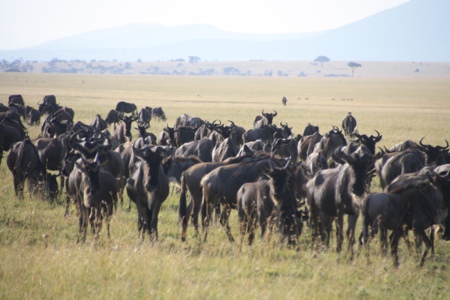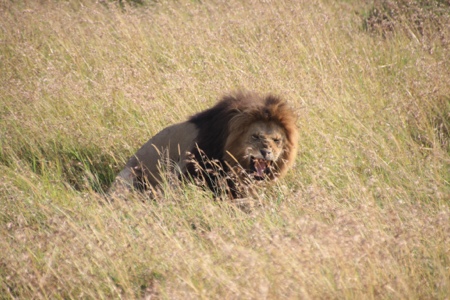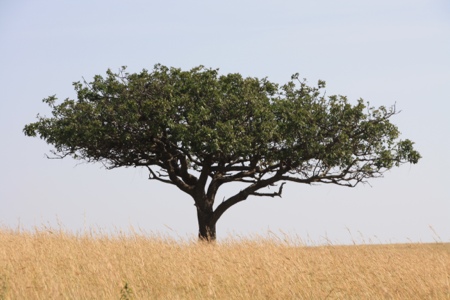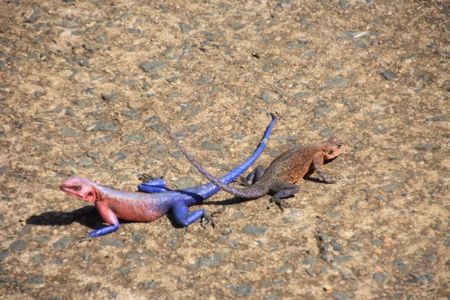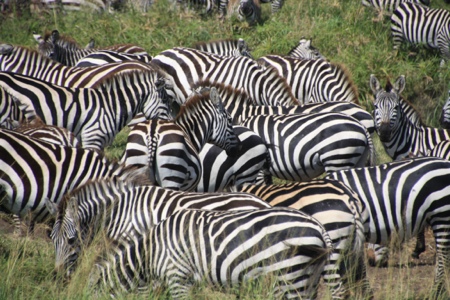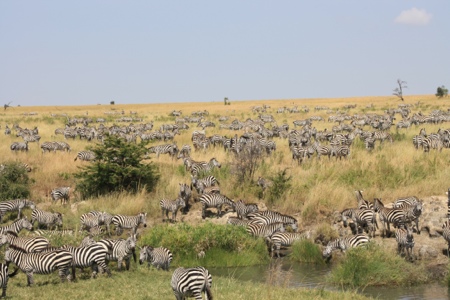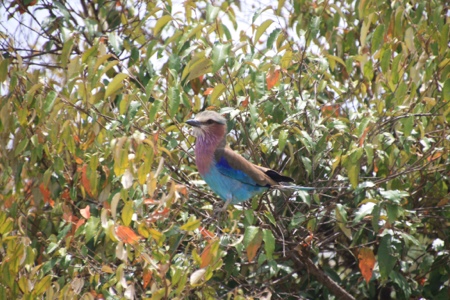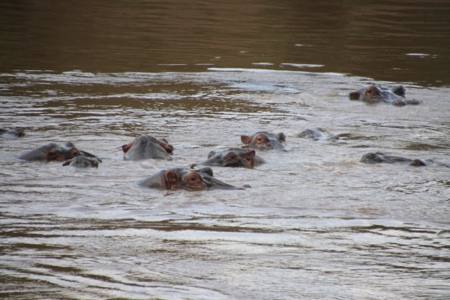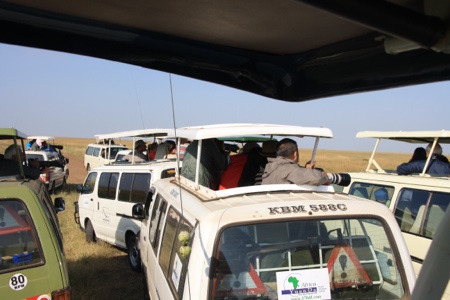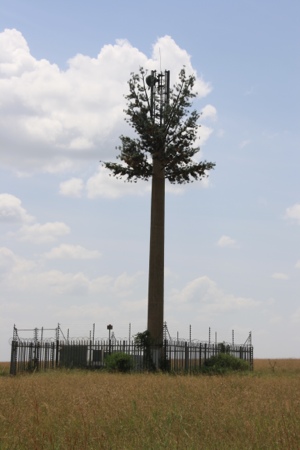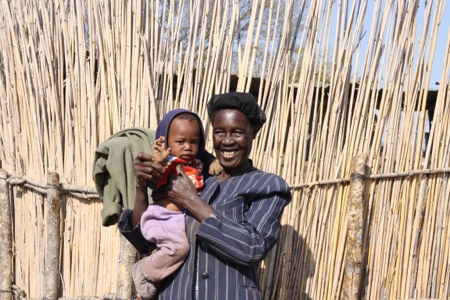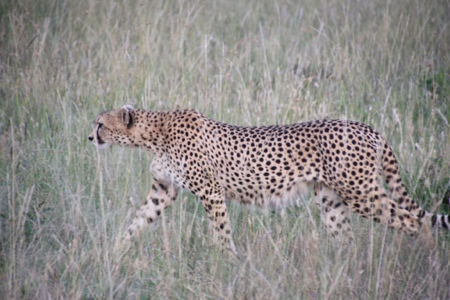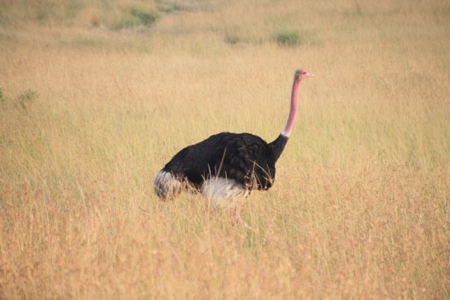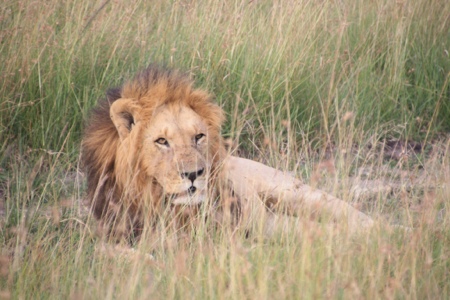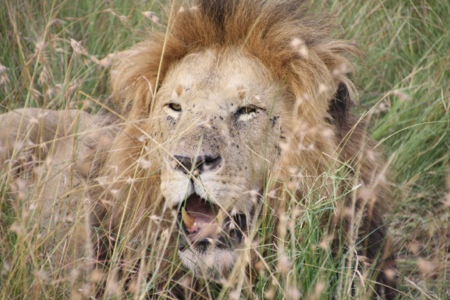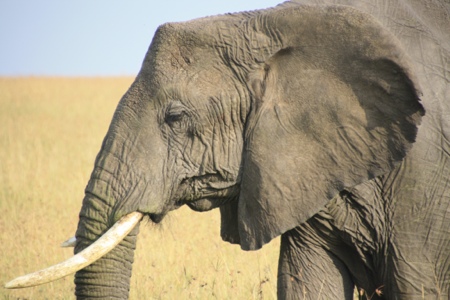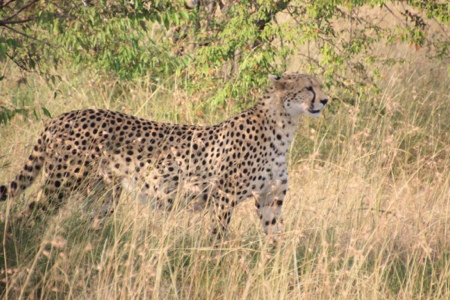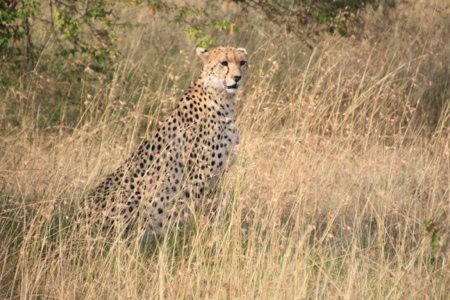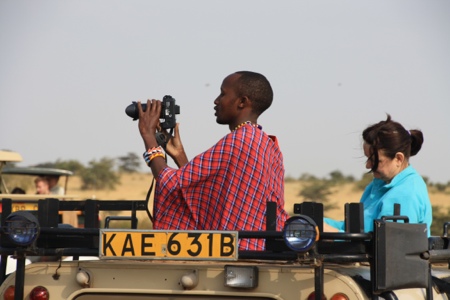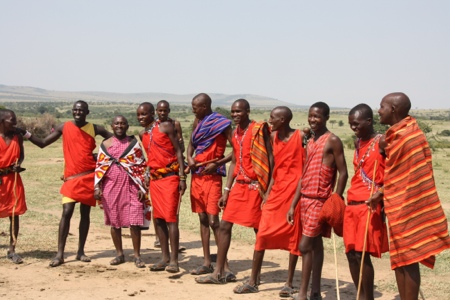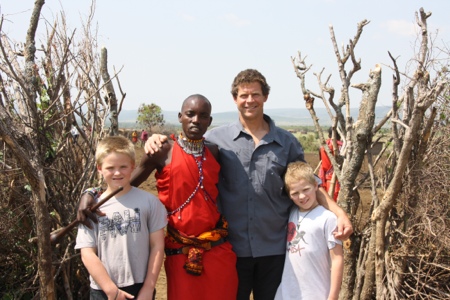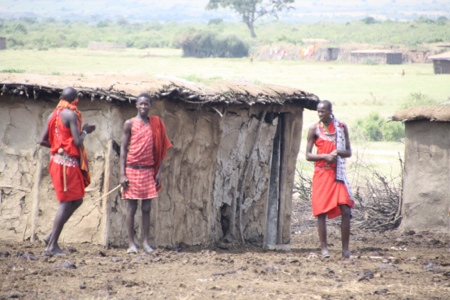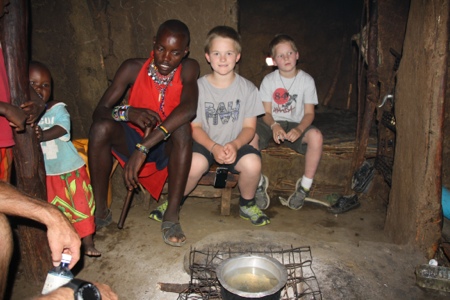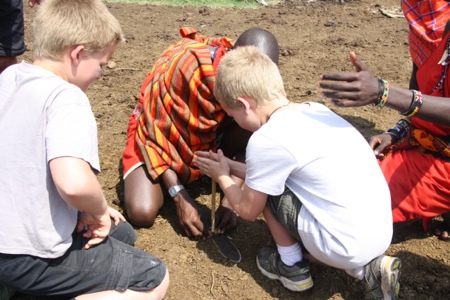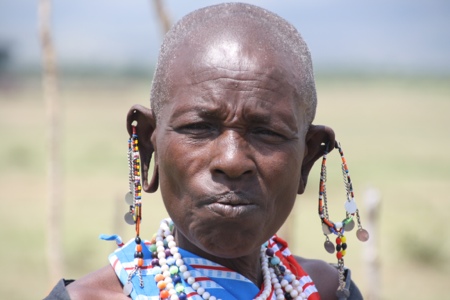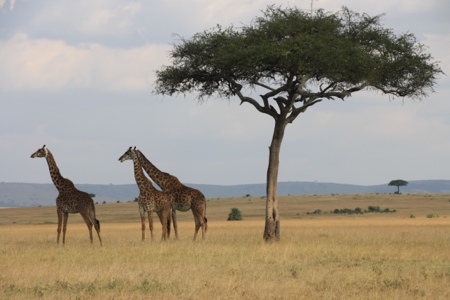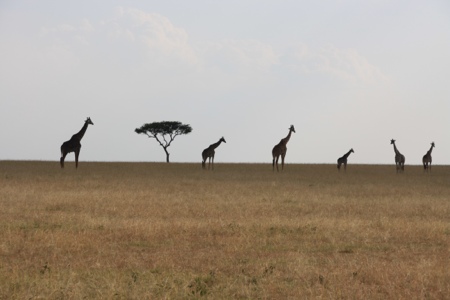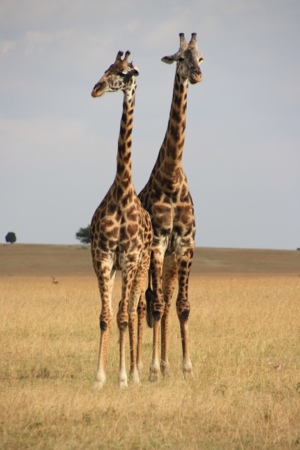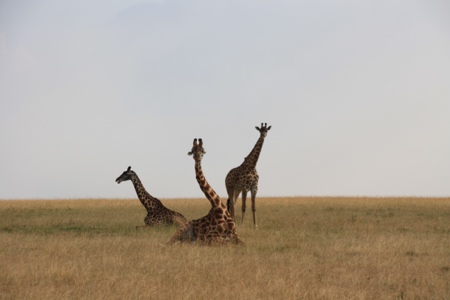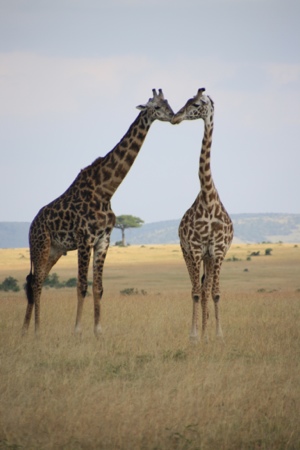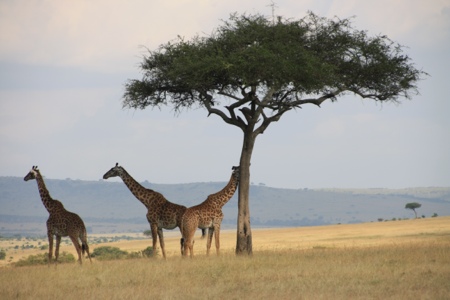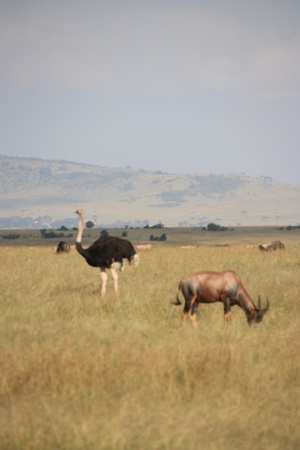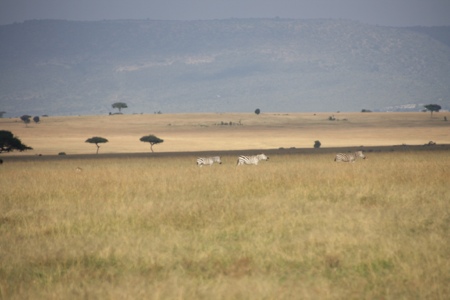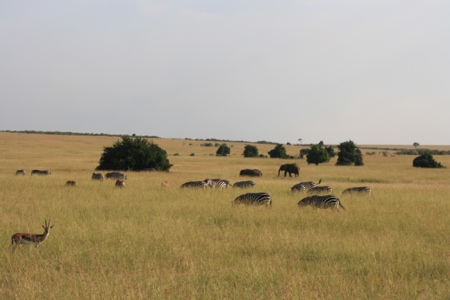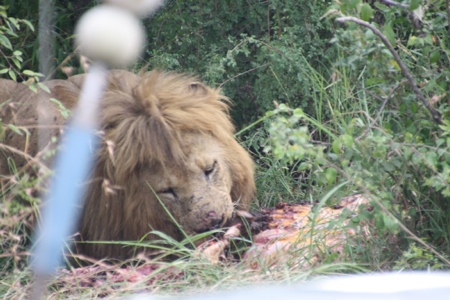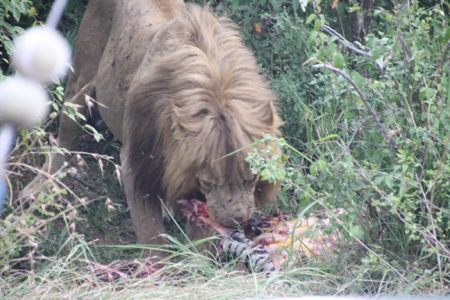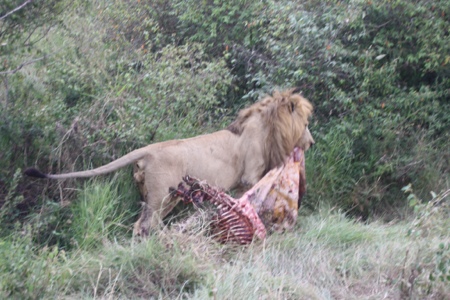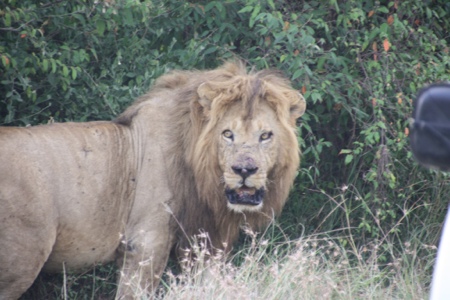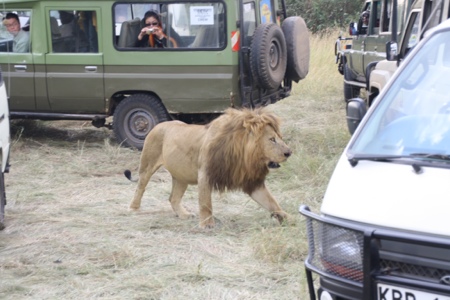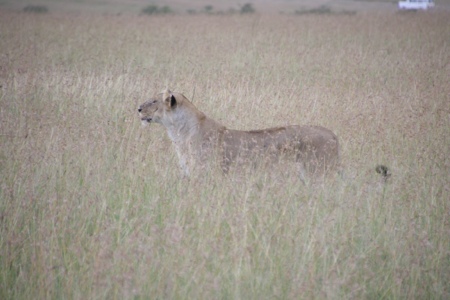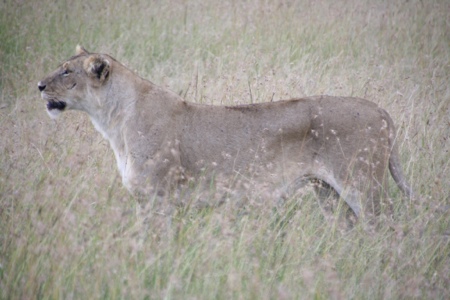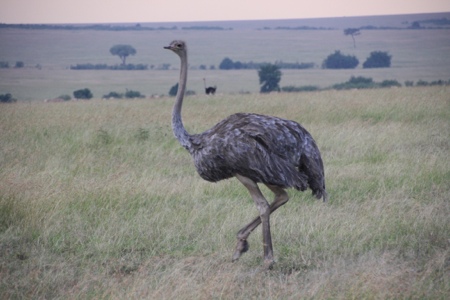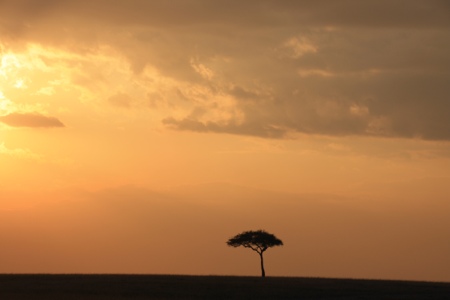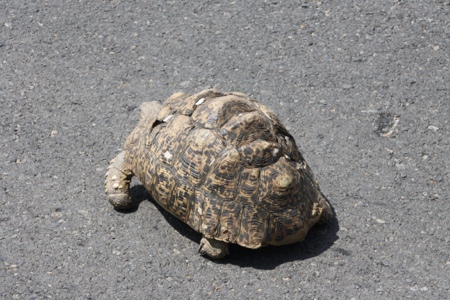An early start, but earlier for John. Once again, he’s the caged animal. As he’s not allowed to go for a run outside the gates of the lodge with the lions, cheetahs etc, he was reduced to running along the fence line of the grounds of the camp here, several times, and then round and round the soccer pitch (also several times) and by the time he had breakfast he was giddy.
Today’s animal encounters were: wildebeest, banded mongoose, Thomson gazelles, impala, elephants (yes, I did take more photos, and yes, they are worth it), hyenas, jackal, a beautiful crane, a cheetah devouring a kill, giraffes (took more photos but the light was bad so you’ll never have to see them), lion and lioness on honeymoon (see below for the details), another jackal scavenging a carcass, a blue (as in the colour) lizard, zebras in migration proportion (amazing photos below), a Roller bird, another leopard tortoise crossing the road, hippos galore (nothing endangered about them here), and finished the day with a lioness and her cubs in the shade of a tree. Phew.
We chilled out by the pool after that and John taught the boys how to do bombs, eggs and gutsies. He clearly had a misspent youth at the Harold Holt pool. Then it was the customary hour or so looking through our photos while we watched the hippos over the balcony here at the lodge, surrounded by others staring at their own digital devices and marveling at what a day with wild animals can be.
Our biggest disappointment is that the migration is late this year. There is one group of wildebeest that has arrived, but there are thousands to follow. Given the location of the leading animals, the zebra, they will not make the river crossing for another few weeks. so we are now officially “not lucky”.
Here are some of our highlights today:
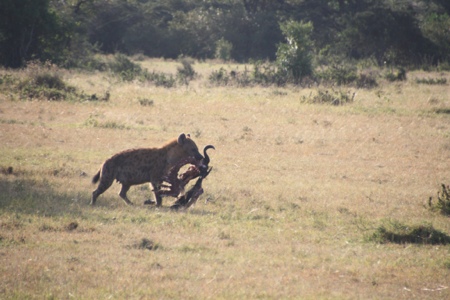
These are some hyenas we saw having on feast of antelope. Hovering around was a jackal, looking for the scraps.
This is the first group of wildebeest to arrive. I wish we could have seen even more.
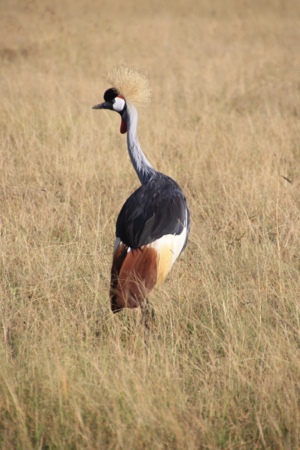
We came across this crane. It’s the national emblem for Uganda. We saw this one, the male, and also the female.

Here’s the cheetah we saw feasting on what we think was an antelope of some sort. She was right beside the road.
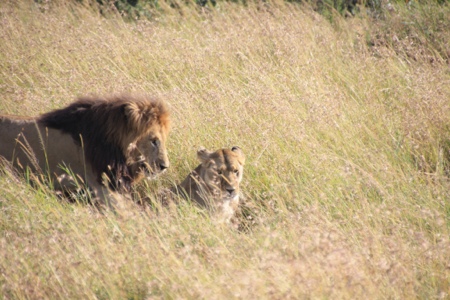
Well here’s the honey moon couple! That’s the way William describes them. While we watched these beautiful animals, we learnt, and observed, how they mate. It happens every 7 or 8 minutes for 2 weeks. No typo. And Fergus got it all on video. They now know what “hooshmakundi” means! And below, is the look (wish you could hear the roar) as the male expresses himself.
This is a sausage tree, because it grows………fruit shaped like sausages. And you thought I was going to say it grows sausages, didn’t you?
Check out these amazing lizards! The one on the left is the male. They were mating too!
Nice view for a Magpie fan!
Now this was worth coming here for. There were zebras as far as we could see, and in a few days the wildebeest will arrive. This is officially nowhere! There is an area between Kenya and Tanzania that neither country owns. So we can add “No Where” to our passport stamps. (I was surprised that they actuall missed the opportunity to stamp us out and back in.)
Here’s the lilac breasted Roller Bird. (I’ve become quite the ornithologist)
Oh, and did I mention there are hippos in the river over the deck of the restaurant here? We really are having the best time here in Africa.

